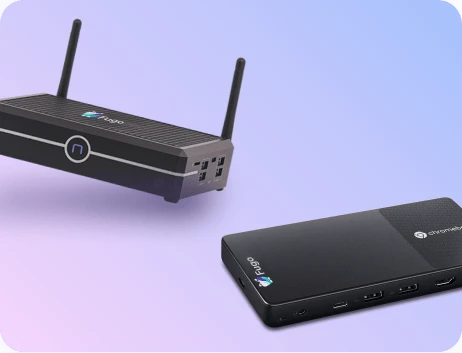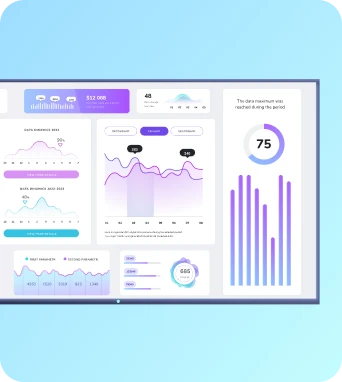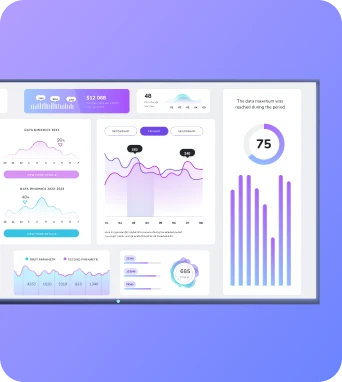Asus fanless Chromebox
The Asus fanless Chromebox is a compact Chrome OS media player designed for continuous operation without moving parts. It delivers stable, low-noise playback and simplified management for digital signage and TV dashboards, offering efficient thermal design, long uptime and straightforward integration with cloud-based content platforms like Fugo.ai. Ideal for public displays and meeting rooms.
Asus fanless Chromebox
Hardware and reliability
Asus fanless Chromebox models are engineered to prioritise reliability and minimal maintenance. The absence of a fan reduces dust intake and mechanical wear, which extends device lifespan and decreases onsite service visits. Thermal management relies on passive heatsinks and chassis design to dissipate heat, so appropriate placement and ventilation remain important; avoid enclosing the unit in sealed cabinets without airflow. Internal components are selected to balance performance for HTML5 media playback, video codecs and browser-based dashboards while keeping power consumption modest. The compact form factor supports VESA mounting and discrete installation behind displays, which helps maintain a clean presentation and protects the device from casual tampering. From an operational viewpoint, a fanless Chromebox presents fewer failure modes than fan-cooled PCs or bespoke media players. Solid-state storage options and fewer mechanical parts reduce the likelihood of hardware faults, and the system’s modest power draw simplifies UPS and power budgeting for multiple-screen deployments. For IT teams, the device’s Chrome Enterprise and management capabilities mean policies, app whitelists and OS updates can be applied remotely, lowering administrative overhead. When combined with a signage management platform, operators can schedule content, monitor device health and push software configurations at scale, ensuring that displays remain consistent across retail sites, offices and campus installations.
Deployment and management with Fugo.ai
When deploying Asus fanless Chromebox units for digital signage, integration with a cloud-based platform streamlines rollout, monitoring and content distribution. Fugo.ai supports Chrome OS devices and offers device provisioning workflows that reduce manual setup time. Administrators can enrol Chromeboxes into a managed fleet, apply Chrome policies centrally and link each device to playlists and schedules in the Fugo dashboard. This approach allows teams to prepare templates, set uptime windows, and define automatic content fallbacks so that displays remain operational even if network conditions fluctuate. The Chromebox’s stable Chrome OS environment complements this model by minimising local configuration differences and ensuring consistent behaviour across all units. Monitoring and diagnostics form a critical part of day-to-day operations. Fugo.ai provides remote health checks and logs for connected Chromeboxes, including playback status, network connectivity and application errors. These telemetry feeds reduce the need for physical site visits by highlighting devices that require attention and by supplying actionable error details to technicians. For multi-site networks, role-based access controls let regional managers control subsets of devices while IT retains overall governance. Firmware and OS updates remain coordinated through Chrome’s management stack, and content updates are handled by Fugo’s content delivery, ensuring that screens display the right messages at the right times without manual intervention.
Compatibility and use cases
Keep the learning going...
Asus Chromebox
Asus Chromebox is a compact Chrome OS-based mini PC often used as a cost-effective digital signage player. In signage contexts it runs a browser-first stack, boots quickly into kiosk or managed sessions, and integrates with cloud signage platforms like Fugo.ai to display playlists, dashboards and HTML5 content reliably across multiple screens.
Asus Chromebox 5
The Asus Chromebox 5 is a compact Chrome OS mini PC designed for enterprise and commercial use, offering modern Intel processors, 4K-capable graphics and multiple I/O options. It’s well suited as a reliable client for digital signage, TV dashboards and kiosks where secure, remotely managed single-purpose playback is required.
Audience analytics
Audience analytics for digital signage captures anonymised viewer interactions with screens and TV dashboards, measuring metrics such as footfall, dwell time, view rates, and inferred demographics to inform content strategy, scheduling and placement decisions for workplace displays and public screens.



